By the way, I can also imagine a third category: passive systems which use an active EQ in front of the amplifier (think on KEF Kube and others).
This type of speakers can be tested with the same amplifier than the "purely" passive for a fair comparison.
😉
This type of speakers can be tested with the same amplifier than the "purely" passive for a fair comparison.
😉
It is not about active or passive being better or worse.
It simply is the reality today, that with all the advantages, like time correction, steep crossover slopes and 100% use of the amps damping factor, the active speaker is cheaper or even priced to passive.
Today a hand full of crossover parts made for audio, just for a two way with 12 dB/oct, are usually more expensive than a basic DSP, 2x2-channel amps and a SMPS from the usual sources. Things get much worse if we go 3-way or try to do steeper crossovers. I use only industry parts a a fraction of boutique costs, but all the absurd discussions about Mundor, Janzen, Duelund and the like show that people waste their money on passive parts big time.
You do not need to buy overpriced plate amps to go active. Just as you do not buy finished passives, you can combine matching parts= modules.
I know that passive crossover parts are a few 100% overpriced today. Anyway, you have to compare the costs the average builder has to pay.
You may argue that programing a DSP and combining it with an amp module and SMPS needs some experience and skills.
Then, on the other hand, there are the skills needed to do a good passive crossover, something I still consider a form of art.
If you try to be objective, just for a second, you must admit that active and passive both are just as real and alive.
Even if this is not true any more for the professional sector, may it be studio or PA.
It simply is the reality today, that with all the advantages, like time correction, steep crossover slopes and 100% use of the amps damping factor, the active speaker is cheaper or even priced to passive.
Today a hand full of crossover parts made for audio, just for a two way with 12 dB/oct, are usually more expensive than a basic DSP, 2x2-channel amps and a SMPS from the usual sources. Things get much worse if we go 3-way or try to do steeper crossovers. I use only industry parts a a fraction of boutique costs, but all the absurd discussions about Mundor, Janzen, Duelund and the like show that people waste their money on passive parts big time.
You do not need to buy overpriced plate amps to go active. Just as you do not buy finished passives, you can combine matching parts= modules.
I know that passive crossover parts are a few 100% overpriced today. Anyway, you have to compare the costs the average builder has to pay.
You may argue that programing a DSP and combining it with an amp module and SMPS needs some experience and skills.
Then, on the other hand, there are the skills needed to do a good passive crossover, something I still consider a form of art.
If you try to be objective, just for a second, you must admit that active and passive both are just as real and alive.
Even if this is not true any more for the professional sector, may it be studio or PA.
I disagree on pricing being more for 8-10 passive parts vs enough amplification and a proper active unit. Sorry, I don't see that. An average of $75 for a straightforward 12/18 electrical yielding LR4 slopes per speaker means $150 for a pair of 2way speakers, being generous. The cheapest DSP unit being the Dayton sells for $164. Add 4 channels of amplifier, and the balance tips for the passive version, IMO.
The main problem with most active xover setups IS the ultra high orders some utilize. Even if the FIR filtering is used to prevent preringing and keep the transient response solid, this eliminates the fantastic blending that passives are known for by making the handoff of drivers more abrupt and just stop and start rather than share the signal.
The main problem with most active xover setups IS the ultra high orders some utilize. Even if the FIR filtering is used to prevent preringing and keep the transient response solid, this eliminates the fantastic blending that passives are known for by making the handoff of drivers more abrupt and just stop and start rather than share the signal.
To center the conversation on the future of our contest, I reiterate that both the active and the passive need to be reasonably “plug and play”. With the present state of active components, it seems like this, in most cases, is expensive in either time or money, or both.
I am a fan of lower order crossovers and drivers “blending” too. I am bringing a 4.5 way open baffle.The passive crossover does not have all that many pieces, and the drivers overlap a lot. It works pretty well. One more wrinkle on the multi-channel amplifier discussion: this speaker has sounded best when two separate amps feed the separable passive crossovers that are wired into a bi-wire terminal cup. For the contest it will be fed with one amp. With two amps with level controls I can wire around the passive baffle step/sensitivity compensation.
The main problem with most active xover setups IS the ultra high orders some utilize. Even if the FIR filtering is used to prevent preringing and keep the transient response solid, this eliminates the fantastic blending that passives are known for by making the handoff of drivers more abrupt and just stop and start rather than share the signal.
I am a fan of lower order crossovers and drivers “blending” too. I am bringing a 4.5 way open baffle.The passive crossover does not have all that many pieces, and the drivers overlap a lot. It works pretty well. One more wrinkle on the multi-channel amplifier discussion: this speaker has sounded best when two separate amps feed the separable passive crossovers that are wired into a bi-wire terminal cup. For the contest it will be fed with one amp. With two amps with level controls I can wire around the passive baffle step/sensitivity compensation.
Last edited:
Nó thật đẹp, cảm ơn bạn đã chia sẻRất tiếc là tôi ở xa quá
I disagree on pricing being more for 8-10 passive parts vs enough amplification and a proper active unit. Sorry, I don't see that. An average of $75 for a straightforward 12/18 electrical yielding LR4 slopes per speaker means $150 for a pair of 2way speakers, being generous. The cheapest DSP unit being the Dayton sells for $164. Add 4 channels of amplifier, and the balance tips for the passive version, IMO.
Seems to get a religious conflict...
I talk about DIYS. A simple, free programable, Sigma Studio ADAU 4-way DSP module, that is usually used 2x2 channels, is about 20$. Throw in two basic 2-channel TPA3255 amp modules, which will set you back another 60$. Last is the power supply, a typical 350 Watt unit at 35$ and you are done- You have a more than 200 Watt per side capable, stereo DSP system. I don't need to mention that in most cases you only use a fraction of that power, resulting in no noticeable amp distortion.
You can go even cheaper if you use smaller amps, like TPA3116 or TDA7498e. Which in reality don't sound much worse. I use one ADAU combination of two TDA7498e amp modules with two 36V 7A SMPS, which makes it a very compact, dual mono, clean 100W per side amplification with a lot of headroom. You can realize it for about 90$ from Aliexpress.
Yes, you still need a case to put them in. If you get creative and fit a new front plate to an old CD player's case for example, you get away dead cheap. I only use metal cases for anything with a SMPS or D-amp module. Remember, this is DIYS, so we can recycle and modify.
Be realistic with the passive crossover. We didn't mention that you got to have a huge stock of passive parts to realize a final passive crossover. You got to be very, very good in measuring and simulating, to get a crossover right on the first try. In most cases you fine tune it by ear and final measurements. Then you may change quite some components.
With a DSP all these different filter components, baffle step and impedance corrections, notch filter etc are included for free. Filter slopes will be as you design them in the software. Too steep is no problem.
I do both, active and passive, but lean to active for the future.
For a quick, uncomplicated, nice sounding speaker system, I still use my huge stock of passive parts. In fact, I can not carry all these coils, caps and resistors that have accumulated, around allone. I don't think I will use all of them in my life. I match all parts for minimum tollerance and adjust coils by removing windings. Which makes the result probaply better than just buying parts for each project.
Active speaker are usually more of a serious project and take longer, because I want them to be safe and reliable, not just a few modules on a piece of wood as often seen.
Level dependent equalisation and limiter are impossible to do passive, by the way.
Here's how it's going. I checked the wrong box in boxsim so the low frequency part of my measurements were ignored. So that first crossover in the picture is junk. Xsim4 locks up and won't open the files I saved. The woofers were so far out of spec, they don't play nice in the boxes I built. Yeah! With this large quantity of cardboard boxes holding maybe $1000 of coils, caps and resistors, I still have to use two or three together to get a value I need. Failing that I am still relying on parts from friends today to get to the finish line. The small black box ... never mind. If it was easy it wouldn't be as much fun!

I know; put the miniDSP and amps in a shoe box with a battery and divider at the input, tape it up with lots of duct tape, and tell the other folks that it is a breadboard crossover!
I plan to attend with another diyaudio member. I'll take some pictures and report back. Should be a good time.
Thanks, we're all looking forward to it.Have fun tomorrow guys! I just love these friendly get together 👍
👍
I attended in 2008. It is a very good meet, well run and with a lot of interesting things to see and hear. I remember it well.Man it would be fun to attend this, but I don't know that it's plausible for me.!
I didn't stay long enough to know the results, but there were lots of diy builds and all the ones I listened to sounded great.
Thanks to all the folks who gave their time and energy to put the event on and share their amazing builds.

Thanks to all the folks who gave their time and energy to put the event on and share their amazing builds.
Attachments
-
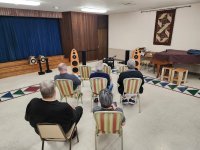 20241005_143151.jpg526.1 KB · Views: 201
20241005_143151.jpg526.1 KB · Views: 201 -
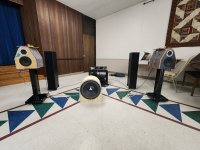 20241005_144030.jpg524.4 KB · Views: 203
20241005_144030.jpg524.4 KB · Views: 203 -
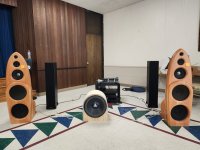 20241005_142009.jpg533.3 KB · Views: 211
20241005_142009.jpg533.3 KB · Views: 211 -
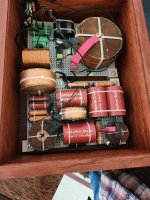 20241005_140338.jpg635 KB · Views: 211
20241005_140338.jpg635 KB · Views: 211 -
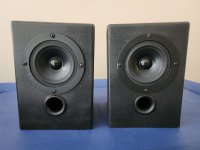 20241005_135907.jpg469.1 KB · Views: 216
20241005_135907.jpg469.1 KB · Views: 216 -
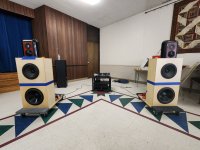 20241005_133515.jpg514.6 KB · Views: 212
20241005_133515.jpg514.6 KB · Views: 212 -
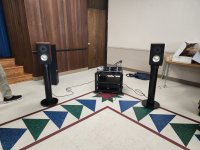 20241005_132442.jpg466.2 KB · Views: 214
20241005_132442.jpg466.2 KB · Views: 214 -
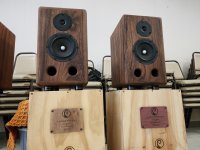 20241005_131717.jpg563.5 KB · Views: 209
20241005_131717.jpg563.5 KB · Views: 209 -
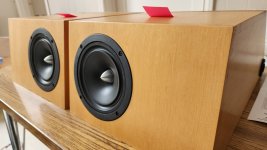 20241005_125919.jpg311.5 KB · Views: 210
20241005_125919.jpg311.5 KB · Views: 210 -
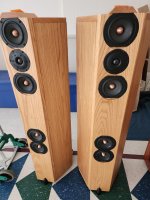 20241005_125739.jpg521.2 KB · Views: 209
20241005_125739.jpg521.2 KB · Views: 209 -
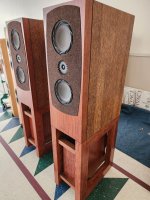 20241005_125719.jpg598.6 KB · Views: 213
20241005_125719.jpg598.6 KB · Views: 213 -
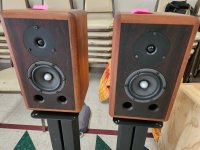 20241005_125659.jpg385.2 KB · Views: 213
20241005_125659.jpg385.2 KB · Views: 213 -
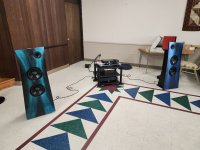 20241005_125620.jpg496.1 KB · Views: 205
20241005_125620.jpg496.1 KB · Views: 205
I believe that there will be further posts with more pictures and results.
awesome looking. How they sound?I didn't stay long enough to know the results, but there were lots of diy builds and all the ones I listened to sounded great.
Thanks to all the folks who gave their time and energy to put the event on and share their amazing builds.
View attachment 1364469
Great pics.
Looking forward to more and the results as well.
100 miles from you. Why didn't you go?
I know, I know, they were not metric. 🙁
- Home
- Member Areas
- Clubs & Events
- "The Puget Sound!" DIY Speaker Contest for 2024